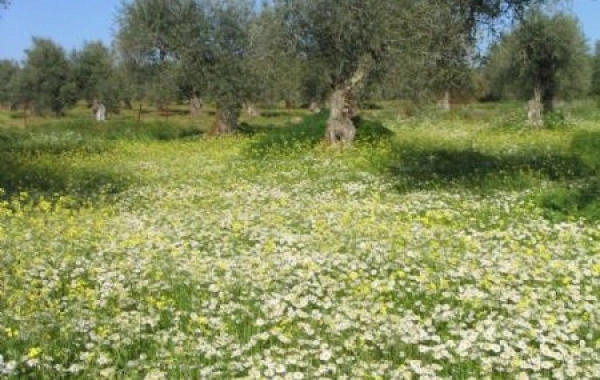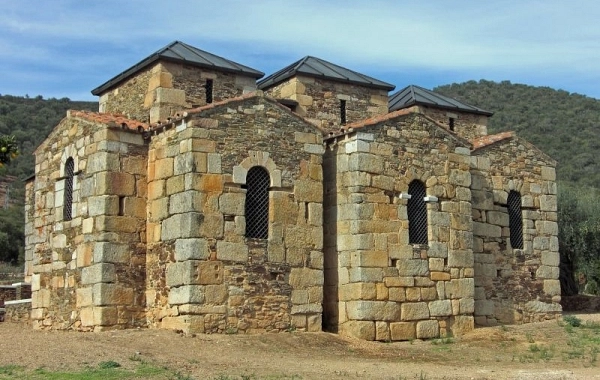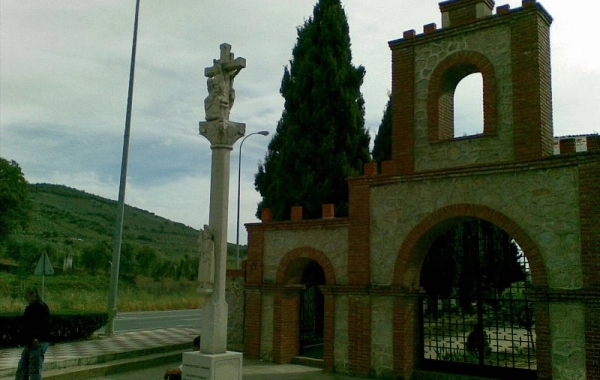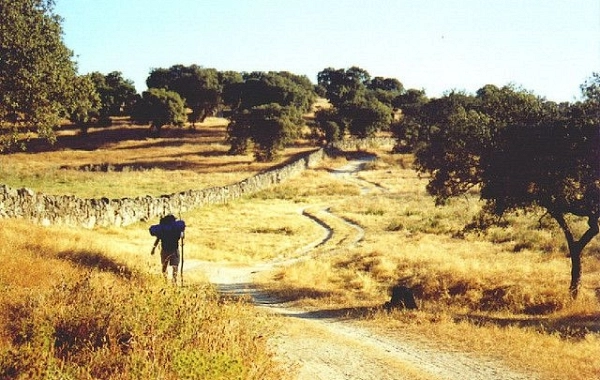VP09 - Mérida - Alcuéscar - 36 km
Distance36 Km.Related packages
Stage of the Camino de Santiago: Mérida to Alcuéscar
This stage of the Camino de Santiago, connecting Mérida to Alcuéscar, is a fundamental part of the Via de la Plata route, one of the most important routes to Compostela. Throughout this stage, pilgrims will enjoy tranquil landscapes, crossing rural paths and small villages. Below is the detailed description of this stage.
Departure from Mérida: Towards the Roman Bridge
The route begins in Mérida, heading towards the Roman Bridge over the Albarregga River, an iconic place connected to the city's history. From there, we continue along a road that leads us to the Proserpina Roman Reservoir, a peaceful and charming location. After traveling about 4 kilometers on the road, we take a left-hand path leading us to the village of El Carrascalejo.
The Camino towards Aljucén
From El Carrascalejo, we follow a path that descends towards a stream, where we turn right and then left. We ascend a gentle hill that brings us to the small town of Aljucén, an important stop in this stage. In Aljucén, we descend along its main street until we reach the N-630, cross the Aljucén River, and take the path to the right, just behind a service station.
Important Tips: Water Supply
It is crucial to stock up on water before continuing, as there are no fountains for the next 20 kilometers. Additionally, there are few yellow arrows along this section, so it is recommended to be very attentive to the signage. Cyclists may opt to follow the N-630 to Alcuéscar, as the dirt path becomes more challenging in some stretches.
Monotonous Path with Few Landmarks
The dirt path can feel monotonous in some stretches, especially with few visible references. However, near the end of the stage, as we enter the province of Cáceres, we locate the Cruz de San Juan. From there, a right-hand path leads us through orchards that give access to Alcuéscar.
What to See in Alcuéscar
Alcuéscar is a town with a rich history dating back to Roman and Muslim times. Founded in the 9th century, it was a strategic target during the Reconquista, reaching its full development in the 13th century under the Order of Santiago. Below are some points of interest in Alcuéscar:
- Parish Church of the Assumption: A great example of local religious architecture.
- Basilica of Santa Lucía del Trampal: An iconic site in the region.
- Ermita del Calvario: A religious point of interest.
- The Village Springs: Perfect for resting and enjoying the scenery.
End of the Stage: Alcuéscar
Upon arriving in Alcuéscar, pilgrims will have completed an important stage on their journey to Compostela. From here, they can continue advancing on their route to other towns along the Camino de Santiago.
Stages
- VP01 Sevilla - Guillena , 22 km
- VP02 - Guillena - Castilblanco de los Arroyos - 19 km
- VP03 - Castilblanco de los Arroyos - Almadén de la Plata - 29,5 km
- VP04 - Almadén de la Plata-Monesterio - 34,5 km
- VP05 - Monesterio-Fuente de Cantos - 21,6 km
- VP06 - Fuente de Cantos - Zafra - 24,6 km
- VP07 - Zafra - Almendralejo - 36,7 km
- VP08 - Almendralejo - Mérida - 29,6 km
- VP09 - Mérida - Alcuéscar - 36 km
- VP10 - Alcuéscar - Valdesalor - 25,7 km
- VP11 - Valdesalor - Casar de Cáceres - 22,8 km
- VP12 - Casar de Cáceres - Cañaveral - 33,2 km
- VP13 - Cañaveral - Galisteo - 28 km
- VP14 - Galisteo - Cáparra - 29,5 km
- VP15 - Cáparra - Baños de Montemayor - 28,5 km
- VP16 - Baños de Montemayor - Fuenterroble de Salvatierra - 32,9 km
- VP17 - Fuenterroble de Salvatierra - San Pedro de Rozados - 28 km
- VP18 - San Pedro de Rozados - Salamanca - 23,4 km
- VP19 - Salamanca- El Cubo de la Tierra del Vino - 35 km
- VP20 - El Cubo de la Tierra del Vino - Zamora - 31,6 km
- VP21 - Zamora - Montamarta - 18,5 km
- VP22 - Montamarta - Granja de Moreruela - 22,7 km
- VP23 - Granja de Moreruela - Benavente - 25,5 km
- VP24 - Benavente - Alija del Infantado - 22,1 km
- VP25 - Alija del Infantado - La Bañeza - 20,5 km
- VP26 - La Bañeza - Astorga - 24,2 km










